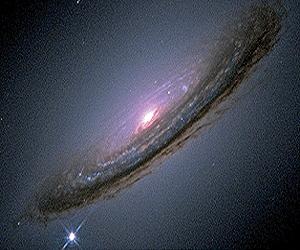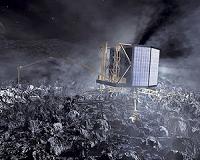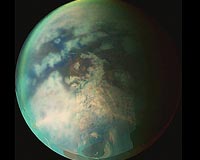|
 Origin Of Key Cosmic Explosions Still A Mystery
Origin Of Key Cosmic Explosions Still A MysteryCambridge MA (SPX) Jul 13, 2010 When a star explodes as a supernova, it shines so brightly that it can be seen from millions of light-years away. One particular supernova variety - Type Ia - brightens and dims so predictably that astronomers use them to measure the universe's expansion. The resulting discovery of dark energy and the accelerating universe rewrote our understanding of the cosmos. Yet the origin of these supernovae, which have proved so useful, remains unknown. "The question of what causes a Type Ia supernova ... read more |
. |
|
|
Free Space, Earth, Energy And Military Newsletters - Delivered Daily |
| . | . |
 |
| .. |
Newborn Stars Discovered In Dark Cosmic Cloud University Park PA (SPX) Jul 08, 2010
University Park PA (SPX) Jul 08, 2010A wave of massive star formation appears poised to begin within a mysterious, dark cloud in the Milky Way. NASA's Spitzer Space Telescope has revealed a secluded birthplace for stars within a wispy, dark cloud named named M17 SWex. The dark cloud is part of the larger, parent nebula known as M17, a vast region of our galaxy with a bright, central star cluster. "We believe we've managed to ... more Hayabusa Contains A Hint Of Dust  Moffett Field CA (SPX) Jul 08, 2010
Moffett Field CA (SPX) Jul 08, 2010The sample return canister from the Hayabusa spacecraft has been opened, and does contain a small amount of dust particles, according to the JAXA website. This is very encouraging news! However, it is not yet known if the dust is from the asteroid Itokawa, where Hayabusa briefly touched down, or if it could be from Earth - left in the container from before launch, or it possibly could have ... more Planck Takes It All In  Paris, France (ESA) Jul 08, 2010
Paris, France (ESA) Jul 08, 2010A new image from the Planck mission shows what it's been up to for the past year - surveying the entire sky for clues to our universal origins. Planck, a European Space Agency mission with significant participation from NASA, has been busily scanning the whole sky at nine frequencies of light, with the ultimate goal of isolating fluctuations in the cosmic microwave background - or light from the ... more |
.. |
 En route to a comet, European probe to fly by asteroid  Cassini Takes A Dive Through A Titantic Atmosphere  Instant online solar energy quotes Solar Energy Solutions from ABC Solar |
.. |
|
|
Free Space, Earth, Energy And Military Newsletters - Delivered Daily |
|
|
. |
 Starburst Cluster Shows Celestial Fireworks
Starburst Cluster Shows Celestial FireworksWashington DC (SPX) Jul 07, 2010 Like a July 4 fireworks display a young, glittering collection of stars looks like an aerial burst. The cluster is surrounded by clouds of interstellar gas and dust - the raw material for new star formation. The nebula, located 20,000 light-years away in the constellation Carina, contains a central cluster of huge, hot stars, called NGC 3603. This environment is not as peaceful as it looks. Ultraviolet radiation and violent stellar winds have blown out an enormous cavity in the gas and dust envelo ... read more |
| The contents herein, unless otherwise known to be public domain, are Copyright 1995-2010 - SpaceDaily. AFP and UPI Wire Stories are copyright Agence France-Presse and United Press International. ESA Portal Reports are copyright European Space Agency. All NASA sourced material is public domain. Additional copyrights may apply in whole or part to other bona fide parties. Advertising does not imply endorsement, agreement or approval of any opinions, statements or information provided by SpaceDaily on any web page published or hosted by SpaceDaily. Privacy statement |
| Previous Issues | Jul 12 | Jul 09 | Jul 08 | Jul 07 | Jul 06 |